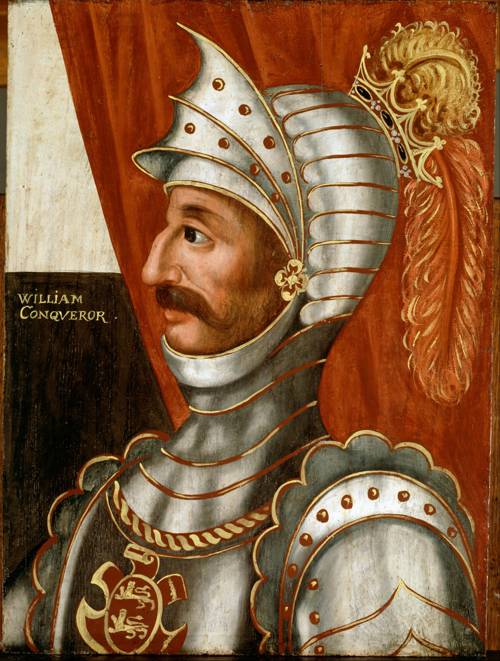
FAQ About William the Conqueror

Who was William the Conqueror?
William the Conqueror, also known as William I, was the first Norman King of England. He rose to fame after winning the Battle of Hastings in 1066, an event that significantly altered the course of English history.

What was William the Conqueror's original name?
William the Conqueror was originally known as William of Normandy, or William II Duke of Normandy. He was later dubbed 'the Conqueror' following his successful conquest of England.

What was the significance of the Battle of Hastings?
The Battle of Hastings, fought on October 14, 1066, was a decisive victory for William the Conqueror. It marked the beginning of Norman rule in England and led to substantial changes in English culture, language, and governance.

How did William the Conqueror become King of England?
William the Conqueror became King of England through his victory over King Harold II at the Battle of Hastings. His success in this battle allowed him to claim the English throne, which he maintained through military strength and strategic governance.

What changes did William the Conqueror implement in England?
William the Conqueror implemented numerous changes in England including the introduction of the feudal system, changes in the English clergy, and significant adjustments in land ownership laws. He also commissioned the Domesday Book, which provided a comprehensive survey of his new kingdom's resources.

What is the Domesday Book?
The Domesday Book is a record of a great survey of England completed in 1086. Ordered by William the Conqueror, it aimed to assess the wealth and assets of his kingdom to ensure efficient taxation.

Where was William the Conqueror born?
William the Conqueror was born in Falaise, in the Duchy of Normandy, which is located in modern-day France, around 1028.

What was William the Conqueror's lineage?
William the Conqueror was the illegitimate son of Robert I, Duke of Normandy, and Herleva, a woman of lower social standing. His lineage played a significant role in his early challenges but did not hinder his eventual rise to power.

Did William face any opposition during his rule?
Yes, William faced numerous challenges and rebellions during his rule in England. His reign was marked by campaigns to quell uprisings in different regions, including the north of England, which was notable for resistance to Norman control.

How did William the Conqueror secure his rule in England after the conquest?
William secured his rule through a combination of military strength, strategic marriages, construction of castles to secure key areas, and the redistribution of land to his Norman followers, thereby ensuring loyalty and control over his new kingdom.

What effect did William the Conqueror have on the English language?
William's conquest led to an influx of Norman French influence on the English language, resulting in a significant transformation over the centuries. This influence is still evident today in the many French-derived words in English vocabulary.

When did William the Conqueror reign as King of England?
William the Conqueror reigned as King of England from 1066 until his death in 1087.

How did William the Conqueror die?
William the Conqueror died on September 9, 1087, from injuries sustained during a campaign in northern France, specifically after a fall from his horse which led to fatal internal injuries.

What is William the Conqueror's legacy?
William the Conqueror's legacy includes the establishment of a strong centralized government, significant cultural and linguistic influence, and a lasting impact on the sociopolitical landscape of England. His reign laid the foundations for the English feudal system and changed the course of history.

Why is William often referred to as "William the Bastard"?
William is sometimes referred to as "William the Bastard" due to his birth being out of wedlock. However, this did not prevent him from gaining power and eventually ruling England.

What were some of the major architectural contributions from William the Conqueror?
William the Conqueror is credited with initiating the construction of many castles, fortifications, and key structures in England, including the Tower of London, which served as both a defensive stronghold and a symbol of Norman power.

What was William the Conqueror's relationship with the Church?
William had a strategic relationship with the Church, leveraging its support to legitimize his rule. He reorganized the English church by replacing Anglo-Saxon bishops with Normans, thereby ensuring loyalty from the clergy.

What were some challenges William faced during his early life?
During his early life, William faced challenges due to his illegitimate birth, which led to issues of legitimacy and threats to his rule as Duke of Normandy. His leadership capabilities and military prowess eventually helped him overcome these obstacles.

How did William the Conqueror influence the feudal system in England?
William introduced the Norman feudal system in England, redistributing land to his followers and establishing a structured hierarchy based on land tenure and military service, which became a cornerstone of medieval English society.

What role did the Norman Conquest play in European history?
The Norman Conquest played a crucial role in European history by altering political boundaries, enabling cultural exchanges, and leading to the rise of Norman influence across Europe. It set precedents in governance and feudal relations that impacted future generations.
